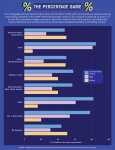Every year, a new batch of nervous high schoolers sharpen their No. 2 pencils, take a couple of deep breaths and open up the SAT booklet.
But battling for that golden ticket to college has never been easy – and the SAT has never been fair. The exam disfavors those who come from lower socioeconomic backgrounds and don’t have equal access to tutoring, preparation resources or good schools.
The College Board, the not-for-profit organization that administers the SAT, has tried to mitigate this by creating the Environmental Context Dashboard, which offers what the Wall Street Journal dubbed the “adversity score,” to provide critical context to the challenges students have faced in addition to their final test score out of 1600.
Because the score is so new, there isn’t a sufficient amount of research to suggest whether it will be beneficial. The adversity score has been piloted at 50 colleges and universities so far and is calculated using 15 factors such as demographic and census data from a student’s high school and hometown to provide a number from one to 100. A score of less than 50 indicates privilege, while a score greater than 50 indicates adversity. College admission officers will be provided with the score, but for students, the score will remain a mystery.
But this only overemphasizes the importance of the SAT in college admissions.
The University of California attempts to look at students equally and fairly using more than just numbers, such as personal statements, writing supplements, high school grades and extracurricular activities.
Instead, the score will be just another number that attempts to slap a label on a student’s individuality.
UCLA spokesperson Katherine Alvarado said that UCLA has not utilized the Environmental Context Dashboard in its review process and will consider it after seeing how this data will be utilized in the future for reviewing freshman applications.
But if UCLA wants to continue driving down the truly holistic admission path, it needs to steer clear of the adversity score. The holistic approach is integral to the UC’s admission approach because it better explains the entirety of an applicant. The adversity score threatens this by adding an arbitrary number to something that can’t be quantified.
That’s because the implementation of an adversity score acknowledges something many have known already: The SAT does not accurately test aptitude – instead, it tests an individual’s privilege.
The additional score to the SAT does not solve the underlying issues with standardized testing. Privileged students have the advantage of paying for tutoring, prep classes to prepare for the SAT and countless hours of studying. Meanwhile, historically disadvantaged students are left in the dust.
David Coleman, CEO of the College Board, said the adversity score will shine a light on students from low-income, rural and inner-city families who have faced difficulty and otherwise would have been overlooked by the traditional SAT.
“No single test score should ever be examined without paying attention to this critical context,” Coleman said.
This new addition to the SAT highlights how the College Board doesn’t understand how to address issues of inequality in the admission system. The score just adds another problem instead of finding a solution to the inherent privilege in the SAT.
Patricia Gándara, a research professor of education at UCLA, said this phenomenon is not limited to just the SAT but to all standardized tests.
“Any kind of standardized test shows the relationship between socioeconomic background and how well a student does,” Gándara said. “To the extent that you can define those characteristics … (the score) can’t do it perfectly, but can do it somewhat.”
Slapping the adversity score onto the SAT is like slapping a Band-Aid onto a gunshot wound: The wound is visibly covered, but it’s not attended to.
After all, one number cannot solve the issues of inequality in university admissions.
And even if the College Board insists on administering a broken test, the least it could do is show students their adversity score. College admission is already a behind-the-curtain affair, and the secrecy behind the numbers only adds to that phenomenon.
“Students should have a chance to justify what score they think they should get on the category,” said Hovhannes Nazaryan, a second-year pre-psychobiology student. “And that justification should, of course, be corroborated.”
It’s true that the adversity score will bring to mind the game of Texas Hold ’em, in which the cards are stacked against those who are disadvantaged. But it’s misguided to think an extra number will fix a system that is damaged at its core. The adversity score might have been a well-intentioned idea, but it doesn’t address the privilege seeped into the SAT.
When the next batch of students takes the SAT the coming school year, they might be under the impression the test is now an honest evaluation of college readiness.
But they shouldn’t be fooled. Battling for the golden ticket is still by no means a fair game.
